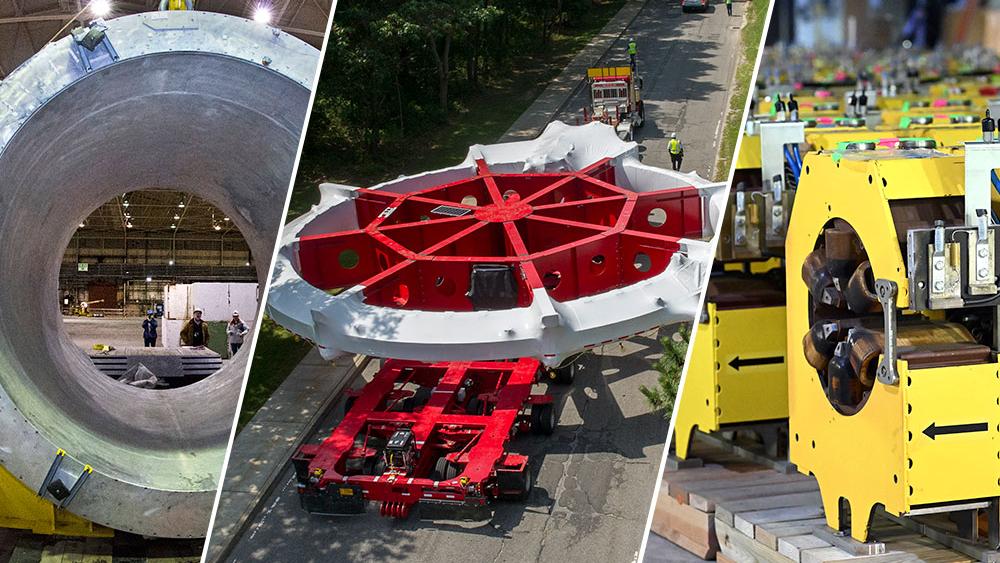Brookhaven National Laboratory
Left to right: The BaBar solenoid magnet at SLAC National Accelerator Laboratory before its move to Brookhaven. (Credit: SLAC) The Muon g-2 storage ring being lifted for transport to Fermi National Accelerator Laboratory in Illinois. (Credit: Brookhaven National Laboratory) Magnets from the former Advanced Photon Source at Argonne National Laboratory after arriving at Brookhaven Lab. (Credit: Brookhaven)
Plan a route, grab some snacks, and fuel up. Engineers and scientists have been sending massive magnets from U.S. Department of Energy (DOE) national labs on cross-country road trips.
|
ADVERTISEMENT |
Magnets are at the heart of many scientific instruments at the DOE’s Brookhaven National Laboratory. They aren’t like typical refrigerator magnets, which apply a relatively weak and uniform force to magnetic materials. These electromagnets are often incredibly large and powerful, with variable fields that can be controlled by changing the electric current that runs through them.
One of their applications is to apply a magnetic force to subatomic particles. For example, the Relativistic Heavy Ion Collider (RHIC) is composed of superconducting electromagnets that steer and focus particle beams as they circulate through the accelerator at nearly the speed of light.
…

Add new comment